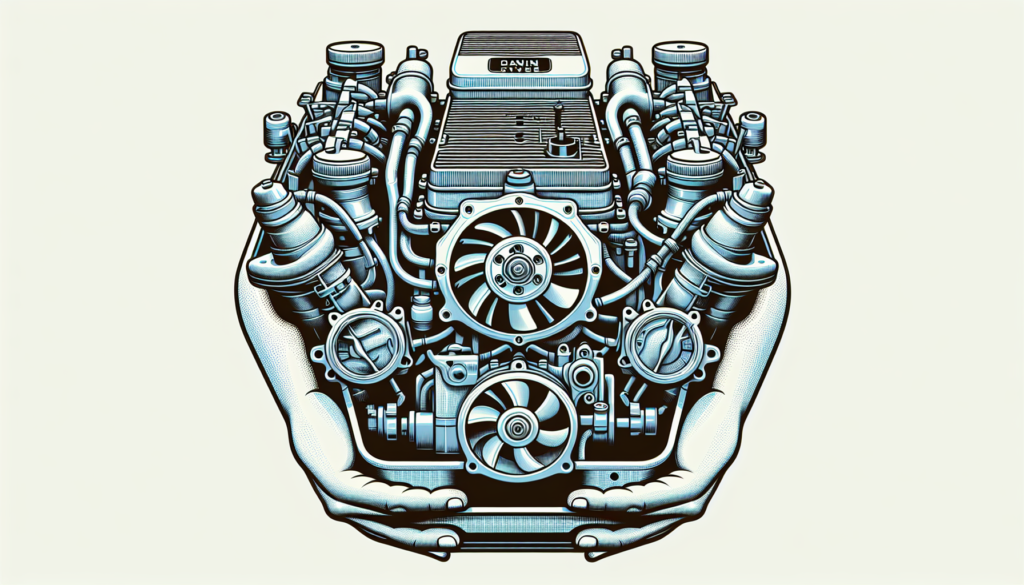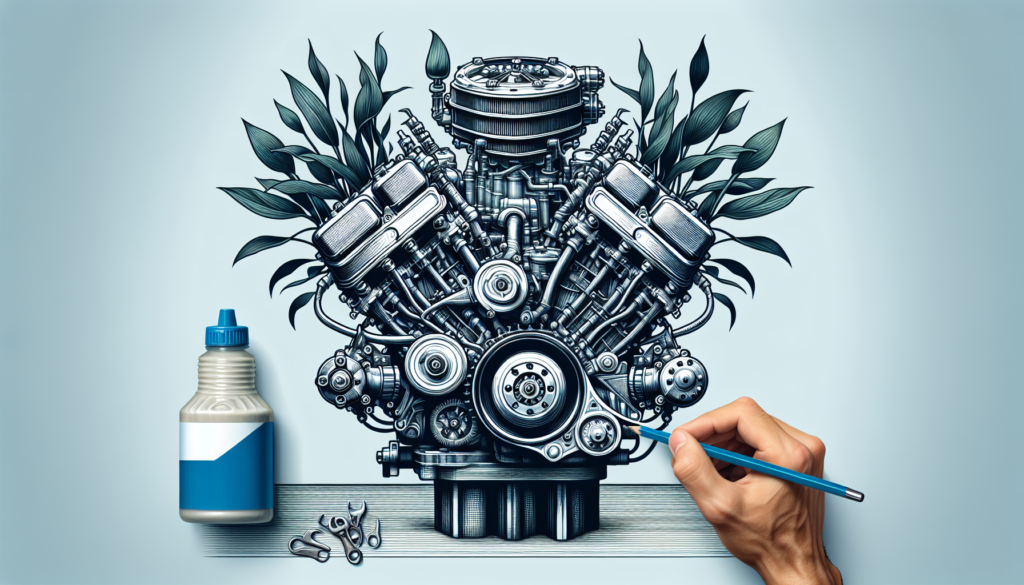You’ve invested a good chunk of change in your beautiful boat, but are you giving its engine cooling system the TLC it deserves? “The Top Boat Engine Cooling System Maintenance Tips for Longevity” is a comprehensive guide that will enlighten you about the critical role of routine preventive maintenance in maximizing the lifespan of your boat’s cooling system. It’s your invaluable resource to discover not just the top tips, but also secrets and tricks of the trade you wouldn’t ordinarily find. Designed with the boat lover in mind, the article walks you through each step of the maintenance process and helps you avoid costly repairs down the lake … or sea!

Understanding the Importance of Regular Maintenance
Boat ownership comes with its fair share of responsibilities. One of the most critical is regular maintenance, particularly of the engine cooling system. Regularly maintaining your boat’s cooling system ensures it operates optimally, giving you peace of mind on your seafaring trips.
The Role of the Cooling System in Boat Engines
A boat’s cooling system plays an integral part in its operation. In essence, it regulates the engine’s temperature, preventing it from overheating. This system uses water as a cooling agent, absorbing the heat generated by the boat’s engine. Without a properly functioning cooling system, your boat’s engine might experience severe issues, including severe damage.
Long-Term Benefits of Regular Maintenance
Regular maintenance of your boat’s cooling system comes with several long-term benefits. For starters, it enhances the longevity of your boat’s engine, saving you money on potentially costly repairs or replacements in the future. Moreover, maintenance ensures efficient fuel consumption, improved boating experience and reduces the likelihood of failures or breakdowns, particularly when you’re out on the water.
Effects of Neglection on Boat Engine Longevity
Failure to regularly maintain a boat’s cooling system can lead to significant problems. Constant overheating can cause engine components to warp or even melt, drastically reducing the lifespan of your engine. Neglecting maintenance can also result in poor engine performance and increased fuel consumption.
Types of Boat Engine Cooling Systems
The cooling system in boats is classified into three types: raw water, fresh water (closed) and hybrid systems. Each system operates differently and requires specific maintenance procedures to function optimally.
Raw Water Cooling System
A raw water cooling system uses seawater directly to cool the engine. This system is simple and economical but comes with a drawback. The seawater, rich in salt and other minerals, can lead to corrosion and deposit formation in the engine over time.
Fresh Water (or Closed) Cooling System
In contrast, a fresh water cooling system uses a coolant to absorb the heat from the engine. The hot coolant is then cooled using a heat exchanger before recirculation. This closed cooling system reduces the risk of corrosion significantly, but it’s more complex and expensive to maintain.
Hybrid Cooling System
A hybrid cooling system combines the features of both raw and fresh water systems. It uses seawater for some parts of the cooling process and coolant for others. This type balances the benefits and drawbacks of both systems.
Comparison and Efficiency
When comparing efficiency, the fresh water cooling system is arguably the best. It offers excellent engine protection, although it’s more costly to maintain. The raw water system is least efficient due to the potential for engine damage, while the hybrid system offers a middle-ground solution.
Routine Inspection of the Cooling System
Proper Techniques for Visual Inspection
Visual inspection of your boat’s cooling system helps you spot any potential issues early. Look out for visible signs such as leaks, corrosion, cracked hoses, or damaged belts. Use a flashlight for better visibility and a mirror to inspect difficult-to-reach areas.
Identifying Dos and Don’ts
When inspecting your cooling system, avoid touching any hot parts to prevent burns. Wear protective gear, including gloves and eye protection. Also, don’t start the engine during inspection, as moving parts can cause injury.
Impacts of Effective Routine Inspection
Routine inspections can save you from expensive repairs down the line. By identifying and addressing issues early, you maintain the functionality of your cooling system and extend the life of your boat’s engine.

Cleaning the Cooling System Regularly
Right Cleaning Agents to Use
When cleaning your cooling system, use cleaning agents specifically designed for marine engines. These cleaners are formulated to remove build-up without harming engine parts.
Frequency of Cleaning
Cleaning frequency depends on the type of cooling system and water you sail in. For boats with a raw water system or those frequently sailing in saline water, consider cleaning after every use. For fresh water systems, a thorough clean every three months is recommended.
Procedure for Effective Cleaning
To clean your cooling system effectively, you need to flush out the old coolant, then refill the system with fresh coolant mixed with a cleaning agent. Run the engine for a while, let it cool down, drain the mixture and then refill with pure coolant.
Impacts of Regular and Proper Cleaning
By doing regular and correct cleaning, you can remove deposits, preventing blockages in the cooling system. This procedure ensures efficient heat transfer, enhancing your engine’s performance and longevity.
Replacing Components of the Cooling System
When and Which Components to Replace
There are several components in your cooling system that you need to replace regularly, including the coolant, hoses, and thermostat. These parts have a limited lifespan and should be replaced based on either their condition or the manufacturers’ recommendations.
Procedures for Proper Component Replacement
Proper component replacement requires you to drain the old coolant, remove the worn-out parts, and install the new components. Once you’ve replaced the parts, refill the system with the coolant and ensure it’s free of leaks.
Benefits of Timely Component Replacement
Replacing components promptly helps ensure that your cooling system operates efficiently, which in turn boosts your engine’s performance and lifespan.
Monitoring the System’s Coolant Levels
Importance of Coolant Levels
Maintaining the right coolant level in your cooling system is crucial. Insufficient coolant can lead to overheating, while an excess can cause pressure build-up.
Checking the Coolant Levels
To check your coolant level, first, ensure the engine is cool, then carefully open the coolant reservoir and look at the level. The coolant should be between the “Full” and “Low” marks on the reservoir.
Refilling the Coolant Levels
If the coolant level is low, refill it to the desired level with a compatible coolant. Make sure to avoid overfilling to prevent possible damage from pressure build-up.
Maintain the Water Pump
Importance of the Water Pump in Cooling
The water pump plays a crucial role in the cooling system by circulating the coolant throughout the engine. Without a functional water pump, your cooling system cannot work effectively, leading to overheating.
Identifying Signs of Water Pump Failure
Signs of water pump failure include coolant leaks, unusual noise from the pump, steam from the radiator, and overheating. If you notice any of these signs, consider taking your boat for professional inspection and repair.
Steps in Servicing Water Pump
Servicing your water pump involves inspecting it for leaks or noise, lubricating the pump, and replacing it if it’s beyond repair. Always hire a qualified mechanic to perform water pump servicing.
Inspecting and Cleaning the Heat Exchanger
Role of the Heat Exchanger
The heat exchanger in your boat’s cooling system acts like a radiator, cooling the hot coolant before it recirculates. Its continual exposure to high heat and potentially corrosive bacteria makes regular inspection and cleaning necessary.
Indications of a Dirty Heat Exchanger
Signs that your heat exchanger may need cleaning include overheating, poor engine performance, and a significant drop in fuel economy.
Procedure for Cleaning Heat Exchanger
Cleaning the heat exchanger involves removing it, spraying it with a special cleaning solution, and thoroughly rinsing it before reinstallation. After cleaning, ensure that the heat exchanger is free of leaks and functioning correctly.
Monitoring and Reporting System’s Temperature
Implications of High Engine Temperature
Excessive engine temperature is a red flag that something could be wrong with your cooling system. High temperatures can cause critical engine components to fail and reduce your engine’s lifespan.
Using Appropriate Temperature Sensing Tools
Keep a close eye on the temperature gauge on your boat’s dashboard to monitor the engine’s temperature. If the temperature surpasses the normal range, it’s time to investigate the cooling system.
Procedures for Temperature Monitoring
To monitor the engine temperature, regularly check the temperature gauge while the boat is operating. Also, consider installing an audible alarm system that warns you when the engine temperature exceeds the safe limit.
Scheduling Professional Maintenance
Importance of Professional Maintenance
While you can perform some maintenance tasks, it’s best to schedule regular professional maintenance. An experienced mechanic has the know-how to comprehensively inspect, clean, and repair your cooling system.
Choosing Right Maintenance Expert
Choose a professional who is experienced with your boat’s type and model. Ask for recommendations from fellow boaters, or do a quick online search to find reputable marine mechanics in your area.
Ideal Timing for Professional Maintenance
The best time for professional maintenance varies depending on the type of boat and how often it is used. However, it’s generally a good idea to schedule professional maintenance at least once a year, preferably before the peak boating season.
Maintaining your boat’s cooling system is undoubtedly a crucial part of boat ownership. By practicing regular maintenance, you can ensure that your cooling system – and by extension, your boat’s engine – operates efficiently for years to come. Happy boating!

